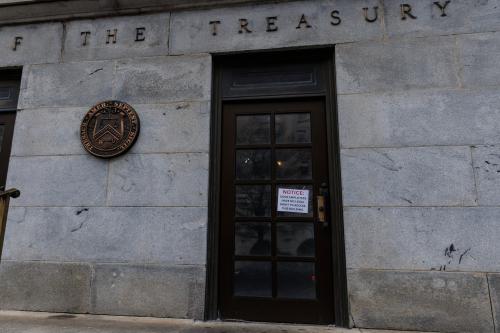The first release of 2010 Census numbers is now out – the national population total and the headcount for the 50 states and the District of Columbia. What did the new count tell us that we didn’t already know? Perhaps not a lot! The final population figure of 308.7 million was almost exactly what was estimated over a year ago, and the interstate reshuffling of 12 congressional seats, mostly from the Frostbelt to Sunbelt, have been largely predicted by the experts. Still, there are some nuggets that are worth noting:
The late decade immigration slowed — The major headline from the Census is that we just experienced the lowest decade growth, 9.7 percent, since the Great Depression. For most of the industrialized world, nearly 10 percent decade growth is nothing to sneeze at. But after the 13 percent growth we enjoyed during 1990s, and the 52 percent growth since 1970, this is a number worth studying carefully.
The reason for this decline is largely due to falling immigration numbers. During the 1990s, immigration added about one million people a year. But it declined for a few years after the 9/11 terrorist attacks and especially with the post-2007 recession.
When the Census Bureau projects our population to reach 400 million by 2039, it assumes annual immigration approaching 2 million a year. By this decade’s end, we fell well short of that.
Population mobility slowed, as well — Mobility within the country mattered too. Migration between states hit historic postwar lows over the past three years due to the double whammy of the recession and the mortgage meltdown. This put the brakes on what could have been a bigger haul, in terms of seats in the House of Representatives, for the Sunbelt, particularly for boom-then-bust states like Florida and Arizona.
Texas was in the right place at the right time — Texas increased its population by more than 20 percent and gained four new congressional seats, more than any other state. It led the nation in numeric growth for the first time. Previously, California held that honor after the last eight censuses.
Texas’ relative growth advantage rose since the onset of the recession. As growth rates of Sunbelt high flyers like Florida, Arizona, and Nevada plummeted over the past three years, Texas held its own due to its relative immunity to extreme housing and job market downturns.
It also benefited from the relocation of Hurricane Katrina evacuees from Louisiana. That may have cost Louisiana a House seat, the only Sunbelt state to lose a seat, which will become a pickup for Texas.
Sunbelt gains are shifting inward — States in the South and West have consistently gained population and political clout from their Northeast and Midwest counterparts over several decades. Since the 1980 census, the Sunbelt held a majority of people and congressional seats. It now represents 60 percent of the population and will hold a 263 to 172 advantage in the 113th Congress.
Yet the focus of change within the Sunbelt has shifted with the last two censuses as population has dispersed. From the 1950 to 1990, three states, California, Texas and Florida, accounted for two thirds of the gains the Sunbelt made in congressional seats. But in the 2000 Census, these three states commanded only five of the 12 Sunbelt seat gains. This time, six of the 12 new Sunbelt congressional seats were elsewhere. For the first time since statehood, California did not gain any seats, while Nevada, Arizona, Utah and Washington each gained one. In fact, if the mid-decade bubble-induced migration from California to these more affordable neighbors had continued, the Golden State might have actually lost a seat.
Hispanic population gains will be important, especially in “Purple” states — Hispanics played a major role in the new growth in the Sunbelt, indicating the potential for increased political clout. Based on Census estimates, Hispanics accounted for more than 60 percent of Texas’ post-2000 growth, about half of the growth of Florida, Arizona and Nevada, and substantial contributions in other states. The immediate translation of population representation into voter representation may take some time, since many Hispanics are too young or are not yet citizens.
Yet they can make a more immediate difference in “Purple” Sunbelt states. In 2008, Obama won Nevada and Florida largely because the Hispanic voters were a large enough segment to make a difference in an otherwise close election. The same can be said for Senator Reid’s re-election in Nevada last November. While it may be a while before Democratic–leaning Hispanics can do this in the deep Red state of Texas, they can tip the balance more immediately in some of the rest of the Sunbelt.
Cities may do better than we thought — In contrast to other cities, Washington, D.C. has the privilege of getting its population counts reported first, along with the states. The good news is that the District of Columbia showed its first decade population gain since 1950, topping 600,000. This could be a preview of similar good news for other cities. The Census usually does better than intercensal estimates at counting city populations, and the 2000 Census showed unexpected population upticks for many cities, including Chicago and Boston. This time there is another reason to expect a good showing. The end of decade migration slowdown kept people from moving to the suburbs and allowed them to give cities a second look. The census results to be released later this year will tell us how well cities did.
The Census is the only true national benchmark for determining the size and distribution of our population. It’s probably unfortunate the 2010 Census was taken in the midst of a severe recession and an unprecedented migration slowdown. We need to view its results with this in mind.
It is likely that when the economy picks up, immigration and national growth will follow. In that case, Texas will have greater competition for people and jobs within the Sunbelt, and cities will show usual patterns of ups and downs. But the broader trends of a country moving to “new” Sunbelt states, driven heavily by Hispanics and other minorities, will surely continue even more strongly in the next decade. This is certainly fodder for creative thinking about how they will affect the politics and economics in what appears to be the nation’s next frontier.
The Brookings Institution is committed to quality, independence, and impact.
We are supported by a diverse array of funders. In line with our values and policies, each Brookings publication represents the sole views of its author(s).




Commentary
Did the 2010 Census Tell Us Anything New?
December 22, 2010